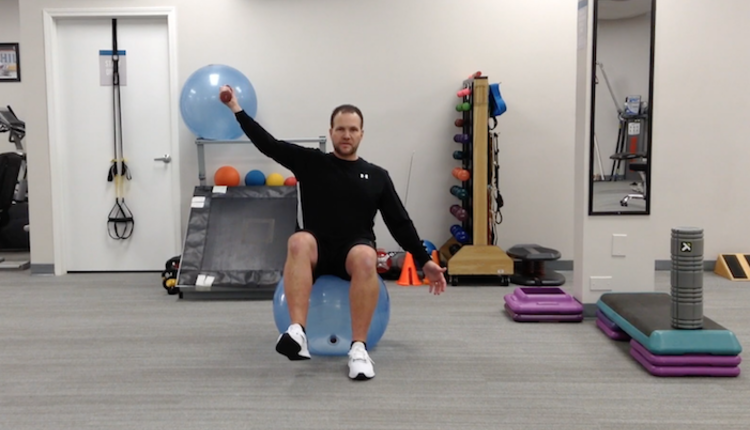If you want to grow your business, the current healthcare crisis in the United States presents a great opportunity for personal trainers. The ever-diminishing levels of health insurance benefits are leading to an earlier discharge of patients from hospitals and physical therapy clinics. Patients are left with additional work to be done but a lack of information and direction. By networking with physical therapists and occupational therapists, personal trainers could be in a great position to take advantage of these opportunities.
Smart trainers seeking to build these relationships will need to understand the different roles and skills of physical therapists (PT), occupational therapists (OT) and personal trainers. PTs and OTs help people return to meaningful activity after an injury or illness. Reducing pain, restoring mobility, teaching people how to prevent re-injury and manage their condition are all goals of therapy. PTs and OTs use hands-on manual techniques to assess and improve joint and tissue mobility. Therapeutic exercise is used to progressively regain muscle and ligament strength for daily activity and athletic performance. Becoming a PT requires the completion of a three-year post baccalaureate program culminating in the doctor of physical therapy degree. PTs should be considered experts in the examination, evaluation diagnosis and treatment of physical impairment and functional limitations of clients. Becoming an OT requires a master’s degree. OTs tend to focus on helping patients address everyday tasks. Importantly, PTs have the training, skills and experience to evaluate and diagnose a specific injury. Like personal trainers, PTs and OTs are musculoskeletal experts who work with people who want to change their body.
According to the National Strength and Conditioning Association (NSCA), personal trainers use an individualized approach to assess, educate and train clients on their health and fitness needs. Personal trainers are experts in movement, exercise selection and coaching to improve fitness. Like PTs and OTs, trainers develop safe and effective exercise programs to achieve their client’s goals.
Despite working with clients who have similar ambitions, there is a divide between physical rehabilitation and personal training. After spending months rehabilitating a client after a back surgery or a broken ankle, the physical therapist may be hesitant to send the client into the hands of a trainer they have never met. How well does the trainer understand the ankle after a break or the spine after a partial fusion? Can the trainer coach the client through episodes of good versus bad pain? Will the trainer push them too hard, or not hard enough? Does the trainer have the relationship to be comfortable reaching out to the PT or OT to ask questions?
The following case study illustrates the business opportunity for the personal trainer:
Richard is a 64-year-old who, after recently retiring from a career in the outdoor retail industry, fell while rock climbing and tore his rotator cuff. Before his injury Richard went to the gym three times a week for strength training and yoga classes. After surgical repair and 10 weeks of rehabilitation he was ready to transition to modified exercises in the gym. Richard had never worked one-on-one with a trainer but after his experience in occupational therapy he was very interested in ongoing guidance on his exercise technique and progression. His occupational therapist connected him with a personal trainer that not only expressed an interest in seeing clients post-injury, but also has experience with active older adults.
This and similar situations are being played out daily in physical and occupational therapy clinics all over the country. Even previously active people could use the expertise of a personal trainer to get back into a lunge or yoga pose with proper technique after injury. If you want to add these clients and referral sources to your business you need start by setting yourself apart.
The first step in developing a steady stream of referrals from physical and occupational therapists is to Google yourself and double-check your social media footprint. It’s a sign of the times; you are only as good as Google says you are and it will likely be the first thing a therapist or potential client checks. Trainers who post a few success stories, exercise videos or nutrition content are easier referrals for therapists to make.
We know that people refer to others who they know, like and trust. Does your local physical therapist know you and your skillset? Do you know the occupational and physical therapists within a 10-mile radius of where you work? Use websites and social media to see their specialties. Have they written blog posts, published research or have a YouTube channel? The more you learn about them, the more you can position yourself to connect on a common exercise technique or areas of interest. Do you both have experience with athletes in throwing sports, older adults with arthritis, or people who need to lose weight before knee replacement surgery?
A personal trainer who is active in local and nationally-accredited organizations such as the NSCA or American College of Sports Medicine should take advantage of membership and keep up on health and fitness research. Along with a sound understanding of anatomy and muscle physiology, keeping current on strength and conditioning science will help demonstrate your expertise. Unlike most PTs and OTs, personal trainers have the skill to progress exercise routines far beyond the clinical, post-injury setting.
Personal trainers aren’t expected to know rehabilitation protocols or some of the long-term effects of injuries, surgeries or medical conditions. If you see a client after being discharged from therapy ask to talk with the therapist to help define realistic expectations for training. Simply having this conversation will set you apart from most of your competition.
Both personal trainers and PTs/OTs are looking to keep business coming in the door. If you approach a therapist showing interest in referring clients to them you will probably get a warm reception and some referrals sent back your way. Make a referral pad for them with your name and logo; that way the therapist has a simple way to refer a client to you and inform you of any exercise precautions. This will help the client build confidence in your abilities even before you meet them.
Combining intellectual and business forces with local PTs may be the ultimate boost in accessing this referral pool. Offer to co-lead a talk on exercise after injury or co-write a blog. A client will feel much more comfortable transitioning to your services if they realize you are a connected piece of their health team.
Physical and occupational therapists are often the gatekeepers at the end of the healthcare system. Even a small therapy practice will have a dozen or more potential training clients being discharged each month. With some networking and planning a personal trainer can get a steady stream of business from rehabilitation professionals. Connect with your local physical or occupational therapy clinic and show how you are a unique asset to them and their clients.
Aaron Shaw, OTR/L, CHT, CSCS, is the founder of MoveMend, a Seattle-based clinic specializing in rehabilitation and post-injury personal training. Connect with Aaron at www.MoveMend.info or Aaron@MoveMend.info as he continues to find ways to bring the therapy and the training world together.
















